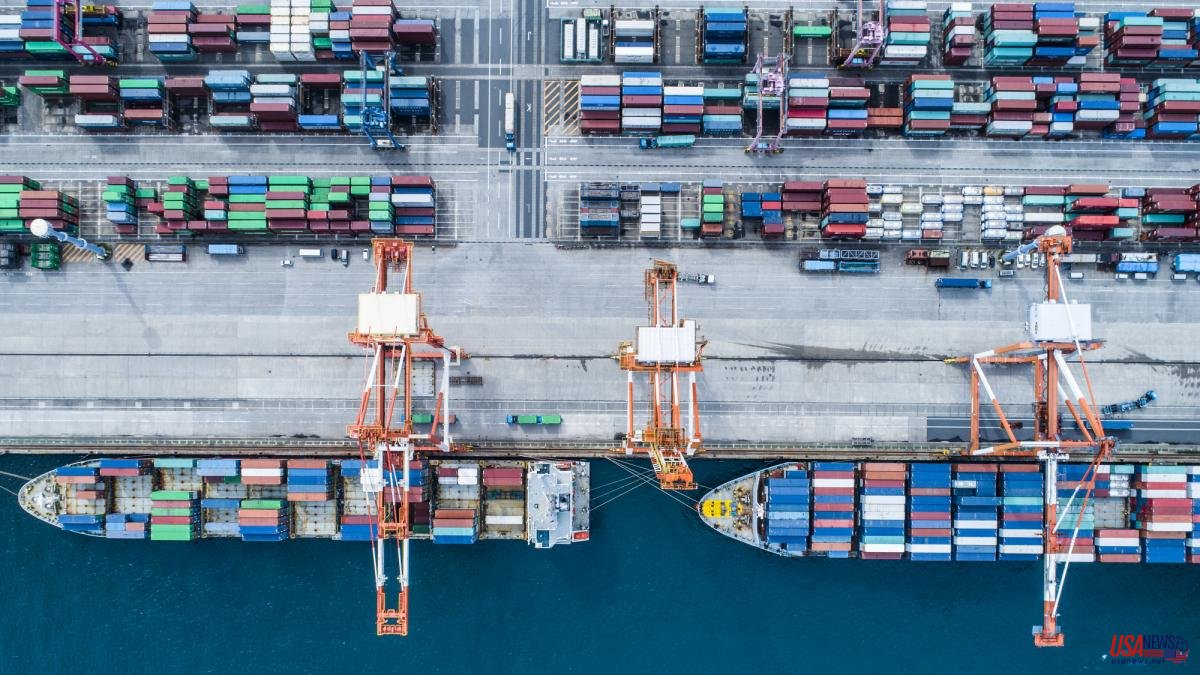The sea is not only a vehicle for leisure and rest, but it is also a fundamental part of the development of society. According to the International Maritime Organization (IMO), shipping accounts for 90% of world trade. Like any sector of the economy, its objective is to decarbonise its activities in the coming decades. How is this change taking place?
The 2021 Energy Transition Perspectives report by the consulting firm DNV indicates that progress is already being made: 12% of new ships built use alternative fuels. This is one of the main formulas to achieve the IMO's objective of reducing the carbon intensity of international maritime transport by 40% in 2030, as confirmed by the General Directorate of the Merchant Marine: "the medium-term measures most hopeful are the development and deployment of fuels with zero or low emissions in all its aspects”.
Today, the most advanced solution for the decarbonisation of the maritime sector is found in advanced biofuels (manufactured from organic waste), which have the capacity to reduce CO2 emissions by between 65% and 90%. Together with them, efuels or synthetic fuels are beginning to be developed, which are zero net emissions and are obtained from the capture of CO2 from the atmosphere and renewable hydrogen.
Apart from reducing emissions, one of the main advantages of these renewable fuels is that they are compatible with the engines that ships use and also with the logistics system that takes them from the point of production to the place of final use. For all these reasons, Dolores Cárdenas, 'advisor' in Product Design at the Technology Lab, Repsol's technology and innovation center, is convinced that "they represent the key solution for the decarbonisation of the maritime sector".
The development of these fuels goes through the joint work of companies from different sectors. In Spain, Navantia and Repsol are developing various collaborative projects in the field of decarbonisation and renewable energies. Together they work on the evaluation of the behavior of advanced biofuels and efuels in the engines manufactured by the naval construction company. In the opinion of Ignacio del Pino, director of the Navantia engine factory in Cartagena, "these fuels are going to be the fundamental key that allows us to significantly reduce CO₂ emissions, since the rest of the technologies currently do not allow a standardized and commercial solution to the demands of said transport".
Another innovative option is the use of renewable hydrogen. Last year, a report presented by the International Renewable Energy Agency (IRENA) indicated that, in 2050, hydrogen-based fuels could account for 60% of the energy mix. The first projects begin to see the light. At the beginning of this month of July, Fincantieri, one of the main shipbuilding groups in the world, and Explora Journeys, the luxury brand of the Cruise Division of the MSC Group, announced the construction of two cruise ships powered by hydrogen that will be in operation in 2027 and 2028.
Some of the advances anticipated on large vessels have already been successfully implemented on smaller vessels. In 2020, a pioneering project, the Energy Observer, demonstrated the good results of this solution. This ship sailed 9,000 kilometers between France and Martinique powered by hydrogen generated from ocean water, solar and wind power, electric motors and batteries.
Also solar energy, especially in pleasure boats, offers energy to move boats. Placing photovoltaic panels on ships points to many advantages. The Port Authority of Santander knows this, which presented in 2021 a passenger catamaran powered only by solar energy for the route between Camargo and Santander.
Other innovative solutions are already making their way, such as the use of “wing” sails (like the wings of an airplane) that take advantage of the wind to navigate, a cutting-edge design tested on the Oceanbird freighter of the Swedish shipping company Wallenius Marine.
This company, together with the also Swedish Alfa Laval, have created the joint venture AlfaWall Oceanbird to develop wind propulsion technologies in boats. The intention is that in 2025 this environmental solution can be implemented.
We cannot forget electrical energy, which appears as an opportunity in the decarbonisation of short-distance routes. The Scandinavian countries are pioneers in these solutions. Already in 2015, a medium-sized ferry, the MS Ampere, set sail from Norway. Meanwhile, a ferry operator, Scandlines has been operating with hybrid engines for years on its routes through Denmark and Germany.
Solutions to reduce emissions also concern other key players in the maritime sector, such as ports. The Port of Barcelona, whose goal is to achieve neutrality in emissions by 2050, has launched an energy transition plan to decarbonise activity.
Its key piece is the Nexigen Plan: this project "will electrify the docks and allow ships to turn off their auxiliary engines and run on electricity from renewable sources while they are docked", explains Ana Arévalo, Energy Transition Manager of the Port of Barcelona, who highlights the will of all the actors in the sector on this path towards sustainability. “Efforts to improve the sustainability of port activity are not limited to container docks and cruise and ferry terminals. Leisure boats and the companies that service them are also working to reduce the environmental impact of their activity,” she comments.
All these examples confirm that the decarbonization of the maritime sector will come from the hand of a great diversity of technologies. "Each segment requires different solutions," says Clara Rey, Director of Technology, Customer Centric and Chemistry at Repsol Technology Lab. "Decarbonization does not have a single solution, since the performance requirements of each product are very different," she says. . We are getting closer to making the pleasure of sailing sustainable.













